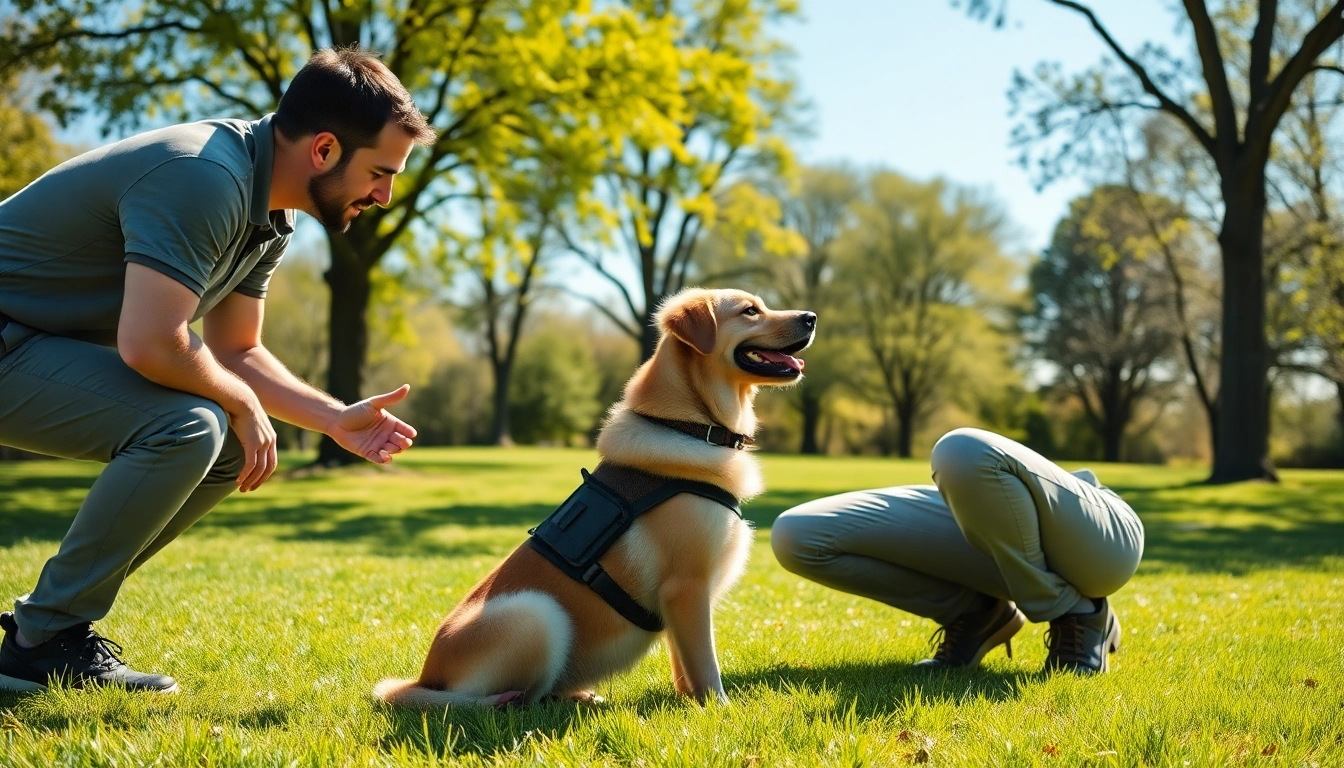Understanding the Role of a Service Dog Trainer
The role of a service dog trainer is both rewarding and crucial in facilitating the connection between humans and canines to provide support for individuals with disabilities. By embracing a deep understanding of canine behavior and relationship dynamics, these professionals prepare service dogs to respond to the unique needs of their handlers, ensuring a high level of safety and reliability.
What is a Service Dog Trainer?
A service dog trainer specializes in teaching dogs to perform tasks that assist individuals with physical or mental disabilities. This role involves extensive knowledge of animal behavior, effective training methods, and a person-centered approach that focuses on the specific requirements and nuances of each client. These trainers often collaborate with healthcare professionals to develop training programs tailored to individual needs, making it a multifaceted and complex vocation.
Key Responsibilities of a Service Dog Trainer
The responsibilities of a service dog trainer encompass a wide range of activities, including:
- Conducting Assessments: Evaluating the needs of both the service dog and the handler to create a personalized training plan.
- Training Techniques: Employing scientifically supported training methods to instill desired behaviors and tasks in service dogs.
- Handler Education: Teaching handlers how to work effectively with their dogs, ensuring a harmonious and productive partnership.
- Evaluation and Adjustment: Monitoring the dog’s progress and making necessary adjustments to training plans based on performance and feedback.
Benefits of Professional Service Dog Training
Investing in professional service dog training presents several benefits:
- Increased Safety: Proper training enhances the safety of both the handler and the public, particularly in unpredictable situations.
- Enhanced Skillset: Trained dogs can assist with a plethora of tasks, from navigating mobility challenges to providing emotional support in stressful environments.
- Greater Public Access: Well-trained service dogs are typically more accepted in public spaces, promoting independence and dignity for their handlers.
Essential Skills Required for a Service Dog Trainer
To excel as a service dog trainer, individuals must develop a unique set of skills that combine behavioral science, practical dog training techniques, and interpersonal communication abilities.
Communication and Training Techniques
Effective communication is paramount for a service dog trainer. This includes verbal commands, non-verbal cues, and active listening skills. Trainers must articulate concepts clearly to both handlers and their dogs, utilizing consistent and positive reinforcement strategies. Mastery of various training techniques, including clicker training, operant conditioning, and reward-based methods, is essential to establishing robust behavioral responses in dogs.
Understanding Canine Behavior
A comprehensive understanding of canine behavior is critical for trainers. This includes recognizing stress signals, behavioral triggers, and the nuances of dog body language. Trainers must be adept at interpreting these signals to anticipate the needs of the dog, facilitating a more effective and responsive training experience.
Building Trust and Rapport with Clients
Creating a strong rapport with clients is vital. Service dog trainers must instill confidence in their clients, fostering a sense of trust that enhances the training experience. This relationship enables trainers to address sensitive subjects, such as the unique challenges faced by individuals with disabilities, while ensuring that clients feel understood and supported throughout the training process.
Education and Certification Paths for Service Dog Trainers
Achieving competence and credibility as a service dog trainer often involves formal education, certifications, and ongoing professional development.
Accredited Programs and Certifications
There are various accredited programs and certification pathways aimed at aspiring service dog trainers. These may involve comprehensive coursework covering canine behavior, learning theory, and training curricula specifically tailored for service dogs. Certification from recognized bodies can authenticate a trainer’s skills and augment their professional reputation, enhancing client trust.
Online Versus In-Person Training Options
While some trainers prefer the structure of in-person training environments, online courses offer flexibility and accessibility for aspiring trainers. Online programs often include video demonstrations, interactive forums, and the opportunity to learn at one’s own pace. Regardless of the mode of training chosen, practical experience through internships or apprenticeship programs is invaluable.
Continuing Education for Service Dog Trainers
Continuous professional development is crucial for trainers to stay current with evolving training techniques, canine science, and legal frameworks governing service animals. Many organizations offer workshops, seminars, and conferences focused on the latest advancements in the field, providing trainers with resources to sharpen their skills and enhance their practice.
Creating Effective Training Plans for Service Dogs
Developing tailored training plans is a critical aspect of a service dog trainer’s role. An effective plan should be individualized, dynamic, and adaptable to both the dog’s and handler’s changing needs.
Assessing the Needs of the Handler
The first step in creating an effective training plan is conducting a thorough assessment of the handler’s specific needs. This involves understanding the handler’s disability, lifestyle, and the particular tasks they expect their service dog to perform. Utilizing questionnaires, interviews, and observation, trainers can gain insight into the unique context in which the service dog will operate.
Developing Custom Training Techniques
Once the needs assessment is complete, trainers must develop customized training techniques that align with the handler’s expectations and the dog’s inherent capabilities. This may include task-specific training, socialization, obedience, and public access training. Importantly, techniques should emphasize positive reinforcement, rewarding desired behaviors to encourage consistency and reliability.
Evaluating Training Progress and Outcomes
Regularly evaluating the progress of both the handler and the service dog is essential. Trainers should establish clear performance metrics and benchmarks, allowing them to gauge the effectiveness of the training plan. Periodic assessments not only track the dog’s proficiency in executing required tasks but also ensure that the handler is gaining confidence and improving their ability to work with the dog.
Building a Career as a Service Dog Trainer
Establishing a successful career as a service dog trainer involves strategic planning and marketing to reach a broader audience while adhering to ethical guidelines.
Marketing Your Services Effectively
A strong marketing strategy is crucial for service dog trainers to attract potential clients. This may include developing a professional website, utilizing social media platforms, and engaging in community outreach efforts. Showcasing success stories and testimonials can enhance credibility, providing tangible evidence of effectiveness that resonates with prospective clients.
Networking within the Assistance Dog Community
Building connections within the assistance dog community can yield valuable opportunities for collaboration, mentorship, and professional advancement. Engaging with other professionals, participating in industry conferences, and joining relevant organizations can foster a sense of community and facilitate the sharing of best practices.
Understanding Legal and Ethical Considerations
Service dog trainers must be well-versed in the legal and ethical considerations surrounding service animals. This includes understanding specific regulations, such as those outlined in the Americans with Disabilities Act, to ensure compliance and advocate effectively for their clients. Ethical practices involve prioritizing the welfare of both the service dog and the handler, maintaining professionalism, and respecting the unique bonds that form between the two.



